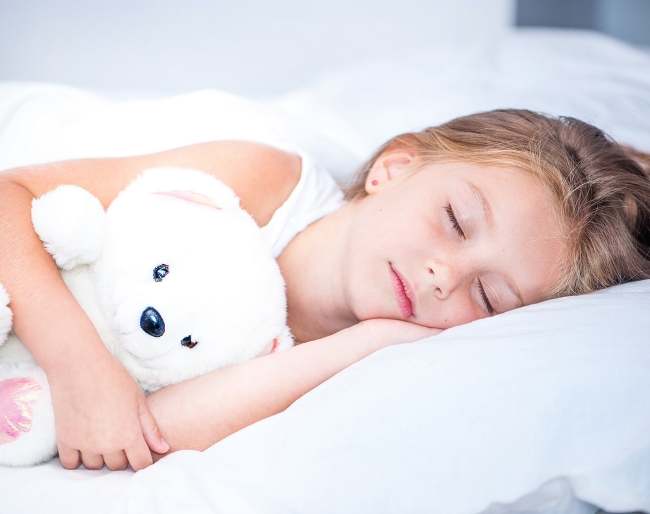The American Academy of Sleep Medicine (AASM) recently released their first recommendations for how much sleep children and teens need each day. So how much sleep should your kids be getting?
More than one-third of people in the United States don’t get enough sleep — and kids are no exception. But how much is enough?
The AASM offers the following age-specific sleep guidelines, backed by the American Academy of Pediatrics:
- 4 to 12 months old — 12 to 16 hours
- 1 to 2 years old — 11 to 14 hours
- 3 to 5 years old — 10 to 13 hours
- 6 to 12 years old — nine to 12 hours
- 13 to 18 years old — eight to 10 hours
Why is sleep so important?
“Sleep is critical to the growth and development of children,” said David M. Suhrbier, D.O., chief of the Pediatric Neurology Division at Children’s Hospital at Erlanger. “During sleep, the brain undergoes restoration, consolidates information that’s been learned and generates important hormones and neurotransmitters.”
Regularly not getting enough sleep can have harmful effects on health.
“Without proper sleep, children are more likely to develop cognitive impairment, mood disorders and behavioral disturbances,” Dr. Suhrbier said. “They’re also more likely to experience academic issues and to take unnecessary risks.”
According to the AASM, children who don’t get enough sleep are also at an increased risk for:
- Diabetes
- Obesity
- Depression
- Hypertension
- Suicidal thoughts
Understanding sleep
You know what architecture is, but are you familiar with sleep architecture? Sleep architecture refers to the patterns of our sleep.
There are two types of sleep: REM (which stands for rapid eye movement) and NREM (which stands for non-rapid eye movement). Throughout a night’s sleep, the body cycles through both types of sleep.
- NREM is composed of three stages, which include drowsiness — the phase between being awake and asleep (stage 1), the initial onset of sleep (stage 2), and your deepest and most restorative sleep (stage 3). During the final stage, blood pressure drops, breathing slows down, muscles are relaxed, growth hormone is secreted, and the body repairs and restores itself in multiple ways.
- REM first occurs about an hour and a half after you first fall asleep and recurs about every 90 minutes. During REM sleep, your brain is active, and dreams and memory consolidation occur. This type of sleep provides energy to the brain and body.
The amount of each type of sleep you get changes as you age.
“In newborns, REM comprises 50 percent of total sleep,” Dr. Suhrbier said. “As children mature, the amount of REM sleep declines, reaching adult levels of 17 to 21 percent of overall sleep by adolescence. Non-REM sleep increases as the child matures.”
Building good sleep habits
Set your kids up for a lifetime of quality sleep by helping them establish good sleep habits early:
- Maintain a sleep routine. Try to stick to the same bedtime and wakeup time every day, rather than sleeping in on weekends and holidays.
- Put away electronics. Heavy use of electronic devices produces light that stimulates the brain to stay awake. Establish a set time several hours before bedtime for electronics to be turned off. Keep smartphones and tablets in a central location away from bedrooms.
- Cut off caffeine. If your kids or teens drink cokes and other caffeinated beverages, encourage them to limit their intake to early to midday to avoid overstimulation close to bedtime.
- Set up a good sleep environment. Keep the room cool and free of distractions. If your child sleeps lightly, try blackout curtains and white noise machines.
- Exercise daily. This may seem like an odd item for a list of good sleep habits. But regular physical activity will help fatigue the body and prepare it for quality sleep.
For questions about your child’s sleep habits, make an appointment with one of our pediatricians.







